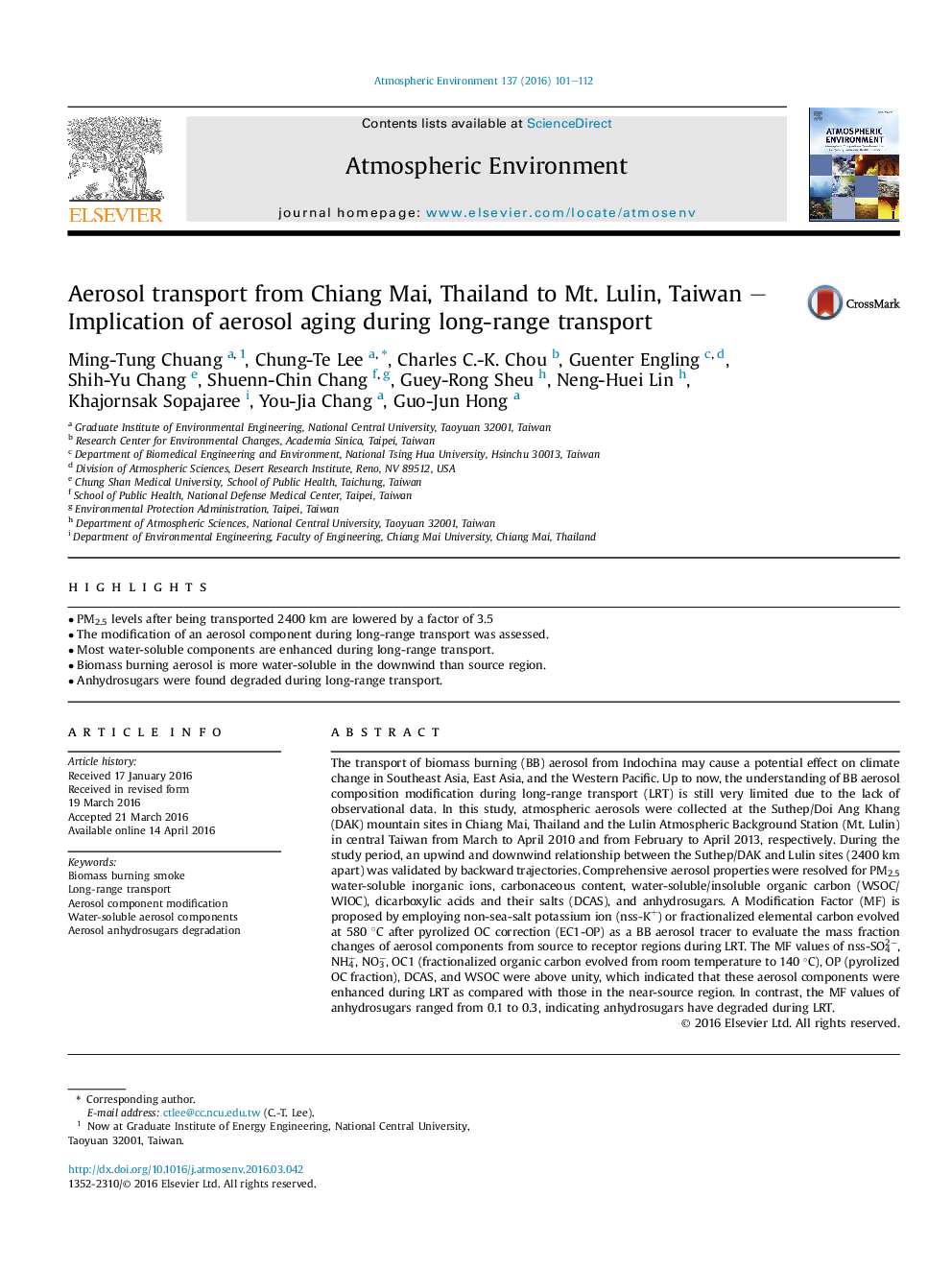| کد مقاله | کد نشریه | سال انتشار | مقاله انگلیسی | نسخه تمام متن |
|---|---|---|---|---|
| 4438050 | 1620337 | 2016 | 12 صفحه PDF | دانلود رایگان |
• PM2.5 levels after being transported 2400 km are lowered by a factor of 3.5
• The modification of an aerosol component during long-range transport was assessed.
• Most water-soluble components are enhanced during long-range transport.
• Biomass burning aerosol is more water-soluble in the downwind than source region.
• Anhydrosugars were found degraded during long-range transport.
The transport of biomass burning (BB) aerosol from Indochina may cause a potential effect on climate change in Southeast Asia, East Asia, and the Western Pacific. Up to now, the understanding of BB aerosol composition modification during long-range transport (LRT) is still very limited due to the lack of observational data. In this study, atmospheric aerosols were collected at the Suthep/Doi Ang Khang (DAK) mountain sites in Chiang Mai, Thailand and the Lulin Atmospheric Background Station (Mt. Lulin) in central Taiwan from March to April 2010 and from February to April 2013, respectively. During the study period, an upwind and downwind relationship between the Suthep/DAK and Lulin sites (2400 km apart) was validated by backward trajectories. Comprehensive aerosol properties were resolved for PM2.5 water-soluble inorganic ions, carbonaceous content, water-soluble/insoluble organic carbon (WSOC/WIOC), dicarboxylic acids and their salts (DCAS), and anhydrosugars. A Modification Factor (MF) is proposed by employing non-sea-salt potassium ion (nss-K+) or fractionalized elemental carbon evolved at 580 °C after pyrolized OC correction (EC1-OP) as a BB aerosol tracer to evaluate the mass fraction changes of aerosol components from source to receptor regions during LRT. The MF values of nss-SO42−, NH4+, NO3−, OC1 (fractionalized organic carbon evolved from room temperature to 140 °C), OP (pyrolized OC fraction), DCAS, and WSOC were above unity, which indicated that these aerosol components were enhanced during LRT as compared with those in the near-source region. In contrast, the MF values of anhydrosugars ranged from 0.1 to 0.3, indicating anhydrosugars have degraded during LRT.
Journal: Atmospheric Environment - Volume 137, July 2016, Pages 101–112
